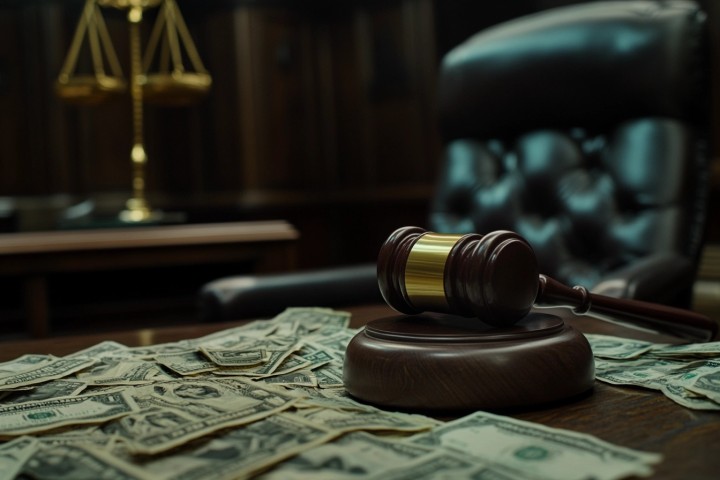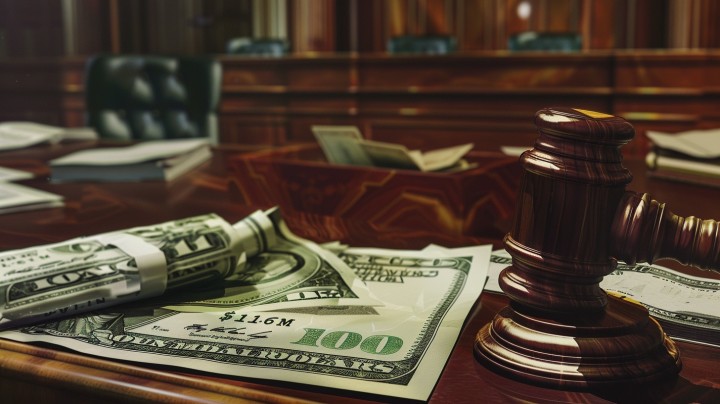Introduction to Bail
Definition and Purpose of Bail
Bail is a monetary guarantee paid to the court to ensure that an accused person will return for their trial. The primary purpose of bail is to balance the right to freedom for the accused with the need to ensure they appear in court.
Historical Context of High Bail Amounts
Historically, bail amounts have varied widely based on the nature of the crime and the individual’s circumstances. In some cases, particularly those involving severe crimes or high flight risks, bail amounts have reached astronomical levels.
Factors Influencing High Bail Amounts
Severity of the Crime
The seriousness of the alleged offense is a significant factor in determining bail. Violent crimes or those involving large sums of money often result in higher bail amounts to reflect the gravity of the charges.
Flight Risk
If the accused is considered a high flight risk—meaning they are likely to flee the jurisdiction to avoid prosecution—courts may set a higher bail amount to deter such actions and ensure the defendant remains available for trial.
Criminal History
A defendant’s past criminal record can also influence bail. Repeat offenders or those with a history of failing to appear in court may face higher bail to mitigate the risk of non-compliance.
Most Expensive Bail Amounts
Robert Durst
In 2003, real estate heir Robert Durst was arrested for the murder of his neighbor. His bail was set at an astonishing $3 billion. Durst’s wealth, coupled with the severity of the charges and his history of fleeing from the law, contributed to this unprecedented amount.
Bernie Madoff
Infamous for orchestrating the largest Ponzi scheme in history, Bernie Madoff’s bail was set at $10 million in 2008. Although not the highest on record, it reflected the immense financial fraud he was accused of, which amounted to billions of dollars in losses for investors.
Michael Milken
Known as the “Junk Bond King,” Michael Milken faced numerous charges of securities fraud in the late 1980s. His bail was set at $250 million, one of the highest at the time, due to the financial magnitude of his crimes and his substantial personal wealth.
Kim Freeman
In 2003, Kim Freeman was charged with drug trafficking and money laundering. Her bail was set at $1 billion, highlighting the severity of the charges and the perceived risk of flight given her extensive criminal network.
Case Studies of High Bail Amounts
Notable Cases
Examining cases with high bail amounts provides insight into the judicial reasoning behind such decisions. Each case typically involves a combination of severe charges, substantial financial resources, and a high risk of flight.
Analysis of Bail Conditions
High bail amounts often come with stringent conditions, such as house arrest, electronic monitoring, and travel restrictions. These measures aim to ensure compliance while allowing the accused to remain free pending trial.
Legal Implications of High Bail
Constitutional Issues
Excessively high bail amounts can raise constitutional concerns, particularly in relation to the Eighth Amendment of the U.S. Constitution, which prohibits excessive bail. Legal challenges often arise when bail is perceived as punitive rather than preventative.
Impact on the Legal System
High bail amounts can strain the legal system by contributing to jail overcrowding and highlighting disparities between wealthy and indigent defendants. This has led to calls for bail reform to create a more equitable system.
Controversies and Debates
Arguments Against High Bail Amounts
Critics argue that high bail amounts disproportionately affect the poor, effectively incarcerating individuals who cannot afford bail while wealthier defendants can secure their release. This disparity calls into question the fairness and effectiveness of the bail system.
The Role of Wealth and Privilege
The ability to pay high bail amounts often correlates with a defendant’s financial resources, leading to debates about whether the current system unfairly privileges the wealthy. High-profile cases exemplify this issue, prompting discussions about the need for reform.
Alternatives to High Bail
Bail Reform Movements
Bail reform movements advocate for alternatives to the traditional cash bail system, such as risk assessment tools and supervised release programs. These initiatives aim to reduce reliance on bail and ensure fairer treatment for all defendants.
Risk Assessment Tools
Risk assessment tools evaluate a defendant’s likelihood of appearing in court and the potential risk they pose to the community. These tools help judges make more informed decisions about pretrial release without relying solely on financial conditions.
FAQs
What is the purpose of setting high bail amounts?
High bail amounts are set to ensure that defendants with significant financial resources have a strong incentive to return for their court dates, thereby reducing the risk of flight.
Can high bail amounts be reduced?
Yes, high bail amounts can be challenged and potentially reduced through a bail reduction hearing, where the defendant’s lawyer presents arguments and evidence to justify a lower bail.
What happens if someone cannot afford bail?
If someone cannot afford bail, they remain in custody until their trial date. This situation has prompted calls for bail reform to address the inequities of the current system.
How do courts determine bail amounts?
Courts determine bail amounts based on several factors, including the severity of the crime, the defendant’s criminal history, and the risk of flight. Judges also consider the defendant’s financial resources.
Are high bail amounts effective in preventing flight risk?
While high bail amounts can deter flight, they are not foolproof. Other measures, such as electronic monitoring and travel restrictions, are also used to ensure compliance.
What are the alternatives to traditional bail?
Alternatives to traditional bail include release on one’s own recognizance (ROR), supervised release programs, and the use of risk assessment tools to determine the appropriate level of supervision without requiring cash bail.
Conclusion
High bail amounts are often set in cases involving severe crimes, significant financial resources, and high flight risks. While these amounts aim to ensure court compliance, they raise important legal and ethical questions. Understanding the factors behind high bail amounts and the ongoing debates about bail reform provides valuable insights into the complexities of the judicial system.






